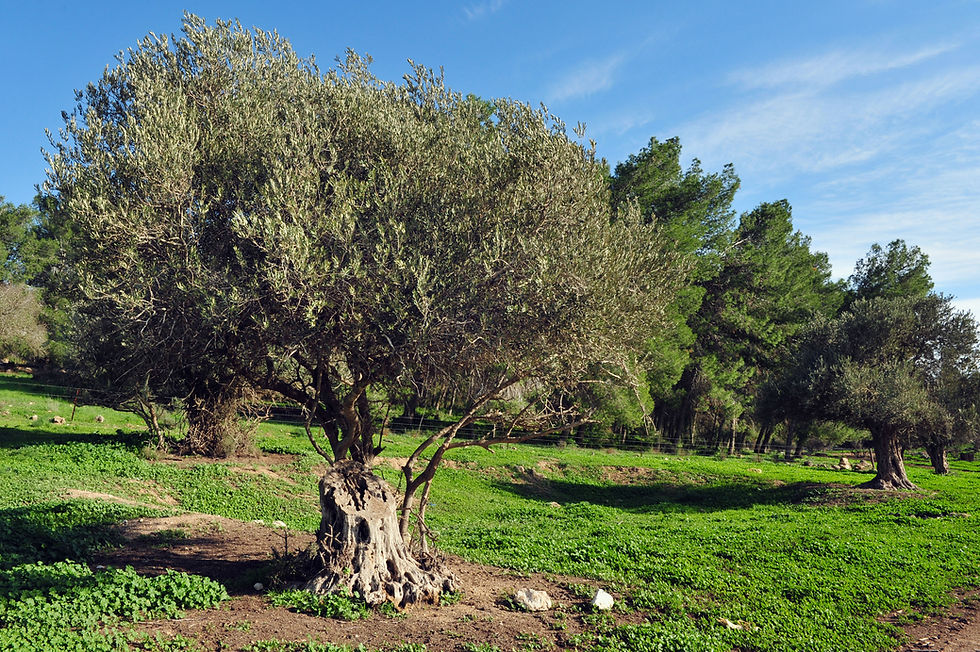Working the Land: Three Easy Steps to Grow Your Own Olive Tree
- iKonnect
- Nov 18, 2021
- 3 min read
The desire to make the desert bloom in the 1800s transformed into a Zionist passion for planting trees throughout the Land of Israel, especially those native to the region like olive trees, fig trees, and date palms. Today, these trees can be found all over the Land of Israel.

1. Harvest the pit: First, you’ll need to find a seed
No, you can’t grow an olive tree from one of those olives you buy at the supermarket in a jar (though they are delicious!), you’ve got to go directly to the tree.
Pick an olive, or better yet, a bunch of olives, directly from the tree after they have turned green and ripened. Place them all in a bucket and gently smash the flesh with a hammer to loosen the fruit from the pit.
Cover the crushed olives with warm water and soak them overnight so the fruit will easily peel back from the seed. Make sure all the skin is rubbed off and the pit is completely clean of olive flesh.
Find the blunt end of the pit (opposite side of the sharp end), and nick it (make a small cut into it) with a knife. Don’t break through the hull completely, or the seed won’t take. Just create a tiny hole about the size of a pen tip. Now soak the prepared seeds for 24 hours in room temperature water.
2. Sow the seed:
Fill a small pot (about three inches tall) with soil. Soil should be one part coarse sand and one part seed compost so that it will drain well. Add a little water to the soil mix to keep it moist
Plant the seeds an inch or two deep in the soil, one seed per pot. Plant several more seeds than you want trees because olives have a low germination rate. Bag the pots in a clear plastic bag to help maintain moisture. Keep the new seedlings in a well-lit area.
And now, the waiting begins. It can take up to a month for your new seedlings to take. Make sure you maintain constant moisture in the top two inches of the soil. You can check the water levels by sticking your finger in the soil occasionally (a green thumb is best to test this). Only water if the top ¼ inch of the soil appears dry, keeping the seed too wet can create fungal or bacterial growth, which can hard the plant. Once you see some growth, you can take the pots of out their plastic bag.

3. Transplanting your tree outside
Wait until your olive plant is at least 18 inches (or 45 centimeters) to move it outside. The best time to plant an olive tree is between August and September, so springtime is the perfect time to start prepping your seeds!
Choose a location that receives a lot of direct sunlight, and dig a hole a few inches deep to plant your olive tree. Gently remove the tree from the pot, careful not to disturb the roots. Make sure the hole and the tree are well watered before planting and place the tree in the hole, covering the roots with soil. You can expect fruit after three years!
Note: If you are planting multiple trees, they need to be at least three feet apart so they don’t compete for nutrients.
